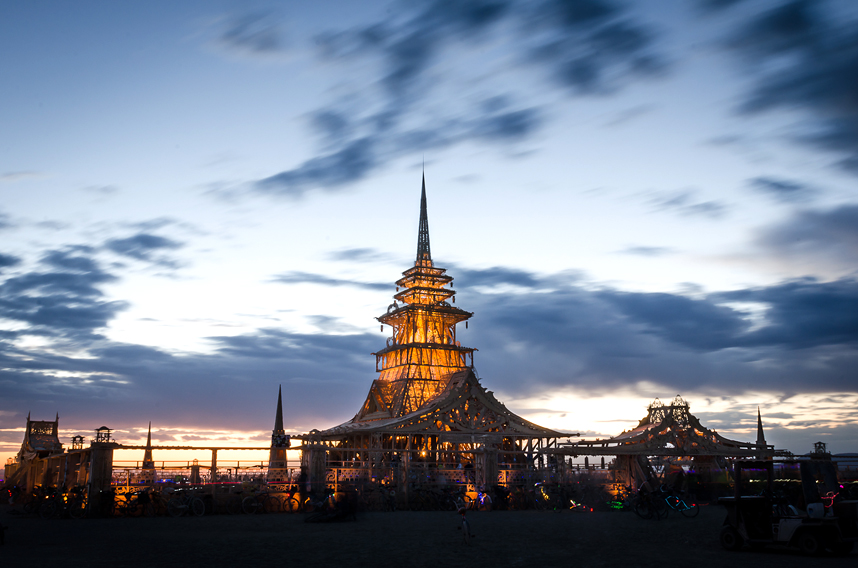|
|
The Temple of Juno
|

|
| Image (c) Spencer Jones |
|
Find us on:
Facebook,
Twitter
Description
The 2012 Temple of Juno was a return back to our traditional style of temple
that
our community is familiar with, that we have built over the years as
David Best's temple crew.
The temple grounds incorporated a large central temple building
sitting within a 200'x200' walled courtyard. The courtyard was accessible by
four entrances, one on each of the temple sides. Benches lined the
exterior space, and surrounded the temple. The scale of the central
temple building was smaller than the last few years of the temples, but
instead was the most detailed temple we have built.
Intricately cut wooden panels and shapes covered the courtyard
walls as well as the interior space and the altars.
The temple's large enclosed exterior space, along with its interior
structure and altar space was intended to address the needs of our
community, to reflect and meditate in private.
Why 'Juno'?
This year's temple was known as 'The Temple of Juno'. Why the name?
The theme for this year's Burning Man event was 'Fertility 2.0'.
Juno was a Roman goddess who had many roles and epithets; among those
that she held were as a fertility deity and overseer of childbirth, a
protectress of women and the community, and a preserver of marriages.
Construction
The proposal for the temple was written in January and approved in March.
Meanwhile, David was doing drawings of the temple and crew communications
were starting. The drawings were then handed off to the architect
and engineer to figure out how to build the structure as pictured.
Construction began in May in the Bay Area, mostly at our workspace in
Windsor. Work parties began on June weekends, and ramped up to nearly
every day by July. Many volunteers participated
in the pre-playa construction - some for a few sporadic days, some nearly
every day we were out there.
In Windsor, the inner structure of the
temple was carefully framed in cedar in order to make even the structural
elements of the temple beautiful. The sections were then disassembled and
flat-packed for the trip to the desert. Fence sections were designed and
engineered and prototypes created. Decorative pieces were sorted and
elements created from the small pieces were created and boxed.
We left for the desert on August 7 for surveying,
and work began on the playa on August 10th. The sections were reassembled
then decorated and wired for lighting. Part of the first section
was destroyed by some of the strongest winds to hit the playa in years
during the first week before it was fully assembled and strengthened...it
was quickly redesigned and rebuilt. After nearly 3 weeks of heavy
construction in the harsh sun, wind, and dust of the desert, it was
opened to the public on Monday August 27.
Event and Burn
The Temple of Juno lived for one week
as the community brought their memorials, weddings, rememberances,
and mementos of life transitions; they wrote and placed them in the
interior, on the altars, and on the temple grounds.
Following the traditional ritual of immolation to release all that
which had been brought to the temple, it was burned to the ground
on Sunday September 2, 2012.
|
|
|
 projects and information for david best's temple building crew
projects and information for david best's temple building crew  projects and information for david best's temple building crew
projects and information for david best's temple building crew